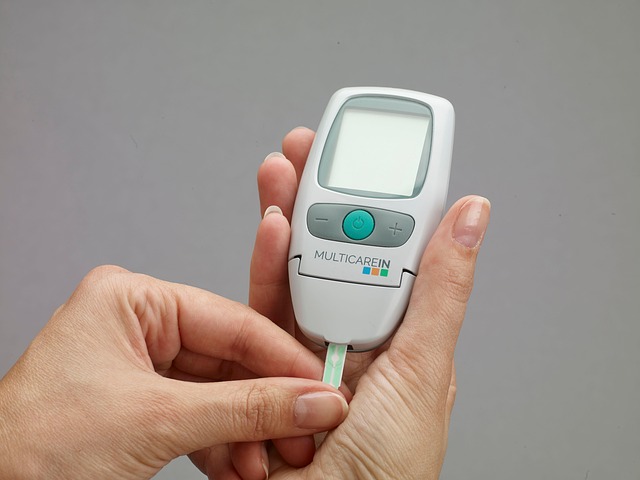Iron deficiency anemia, common in women due to menstruation and pregnancy, can be detected with at-home blood tests in the UK, offering convenience and accessibility. These tests measure ferritin levels, aiding early diagnosis. Timely treatment through dietary changes, supplements, or medical interventions is crucial. Home testing empowers individuals to monitor health, compare results against reference ranges, and consult healthcare professionals for confirmation and management options, including regular follow-up tests.
Iron deficiency anemia is a common yet serious health condition, often detected through simple blood tests. In the UK, accessing these tests at home provides convenience and ease. This article guides you through understanding iron deficiency anemia, exploring home blood testing options in the UK, and interpreting results to take appropriate steps towards management. Discover how a straightforward test can lead to better health and well-being, making it easier to identify and address this treatable condition.
Understanding Iron Deficiency Anemia
Iron deficiency anemia is a common blood disorder where the body lacks enough iron, an essential mineral responsible for producing hemoglobin. Hemoglobin is the protein in red blood cells that carries oxygen from the lungs to all parts of the body. When iron levels are low, it results in fewer and weaker red blood cells, leading to fatigue, weakness, dizziness, and shortness of breath. This condition can affect people of all ages, including children, adults, and older adults, particularly women who are more prone to iron deficiency due to menstruation and pregnancy-related blood loss.
In the UK, a simple at-home blood test is available to identify iron deficiency anemia early on. This test measures the level of ferritin in your blood, which is an indicator of stored iron. If the result indicates low ferritin levels, it could suggest iron deficiency. Prompt diagnosis and treatment are crucial as managing this condition typically involves addressing the underlying cause, such as dietary changes, iron supplements, or, in some cases, medical interventions to prevent further health complications.
UK Home Blood Tests for Anemia Detection
In the UK, home blood tests for anemia detection have become increasingly popular due to their convenience and accessibility. These at-home kits allow individuals to monitor their health from the comfort of their own homes, eliminating the need for frequent clinic or hospital visits. The process is simple; patients collect a small sample of blood using a finger prick or a small needle, follow the kit’s instructions for processing, and then send the sample to a laboratory for analysis. This method is especially beneficial for those with busy schedules or individuals living in remote areas who may face challenges accessing healthcare services.
Home blood tests offer several advantages, including rapid results, privacy, and cost-effectiveness. Many people choose this option as an initial step to assess their anemia risk or as a regular check-up to ensure overall well-being. With the rise of digital health technologies, these tests provide easy access to personal health data, empowering individuals to take charge of their health and make informed decisions regarding their treatment and management options.
Interpreting Results and Next Steps
Interpreting your results is a crucial step in understanding if you may have iron deficiency anemia. Most UK blood tests at home provide a reference range for each marker, so compare your values against this range. If your iron levels (such as ferritin) are low, or your hemoglobin concentration is below the reference value, it could indicate anemia. It’s important to remember that these tests offer a snapshot in time, and other factors like recent bleeding or certain medications can also affect results.
If your test suggests anemia, the next step is to consult a healthcare professional. They may recommend further tests to confirm the diagnosis and determine the underlying cause. Treatment options often include dietary changes, iron supplements, or in some cases, medical interventions. Regular follow-up tests are usually advised to monitor progress and ensure effective management of iron deficiency anemia.
Iron deficiency anemia is a common but treatable condition, and using a UK blood test at home can be a convenient first step towards managing it. By understanding the symptoms and utilizing accessible tools like home testing kits, individuals can promptly address potential iron deficiencies. Interpreting results accurately is key, leading to necessary lifestyle adjustments or medical interventions. Early detection through these simple methods enables folks to take control of their health effectively.
